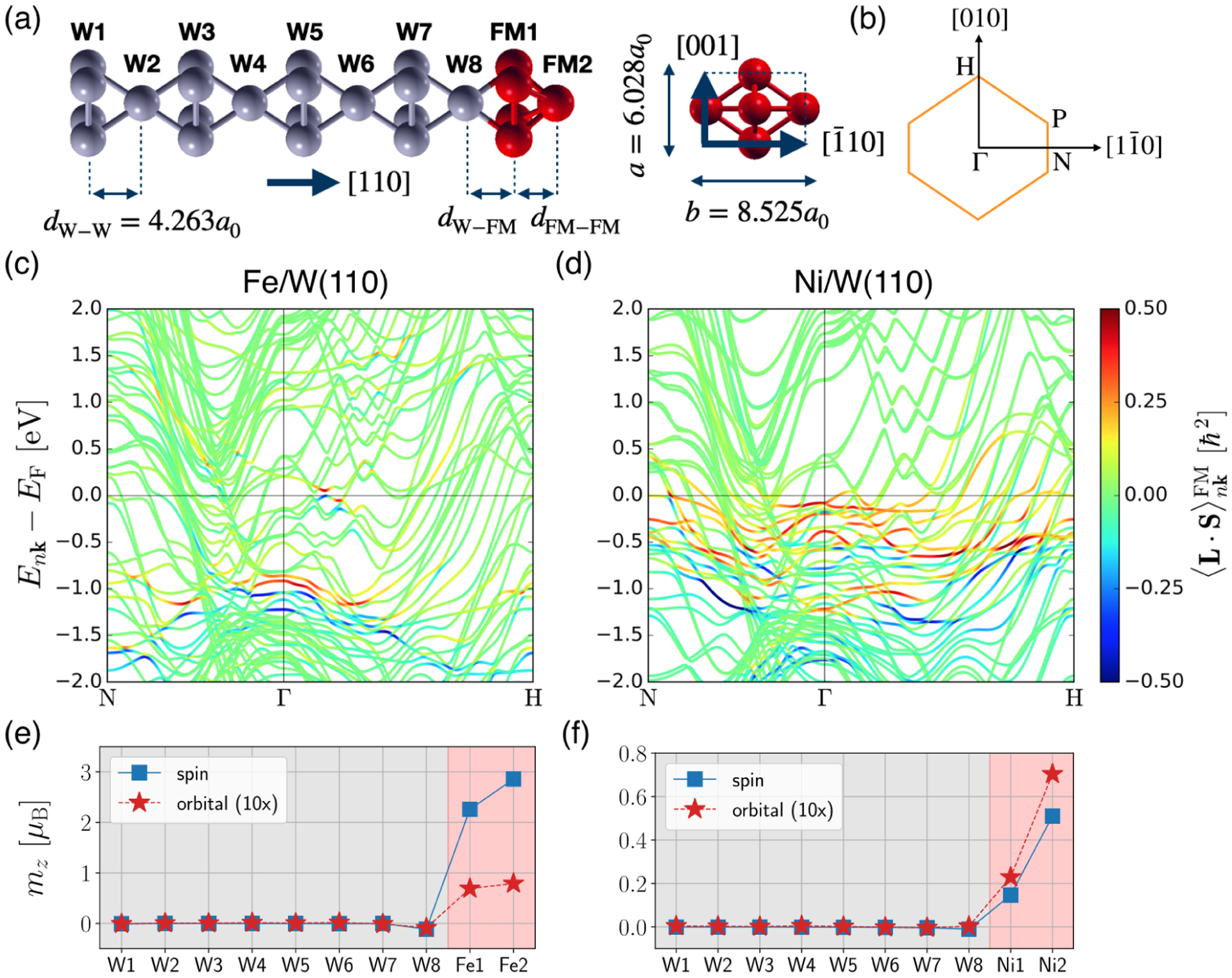FIG. 5.

(a) Crystal structure of ferromagnet (FM)/W(110), where FM = Fe or Ni. Side and top views are displayed on the left and right, respectively. (b) First Brillouin zone and high symmetry points of bcc(110) film. Electronic energy dispersion Enk and the spin-orbit correlation in the ferromagnet for (c) Fe/W(110) and (d) Ni/W(110), which are represented by the line and color map, respectively. Note that is much more pronounced in Ni compared to Fe near the Fermi energy EF. Layer-resolved plots of the spin (blue squares) and orbital (red stars) moments for (e) Fe/W(110) and (f) Ni/W(110). Comparing Fe/W(110) and Ni/W(110), the spin moment in Fe is much larger than that in Ni, but the relative ratio of the orbital moment over the spin moment is much larger in Ni. This implies that the orbital degree of freedom is not frozen in Ni/W(110), while it is quenched in Fe/W(110).
